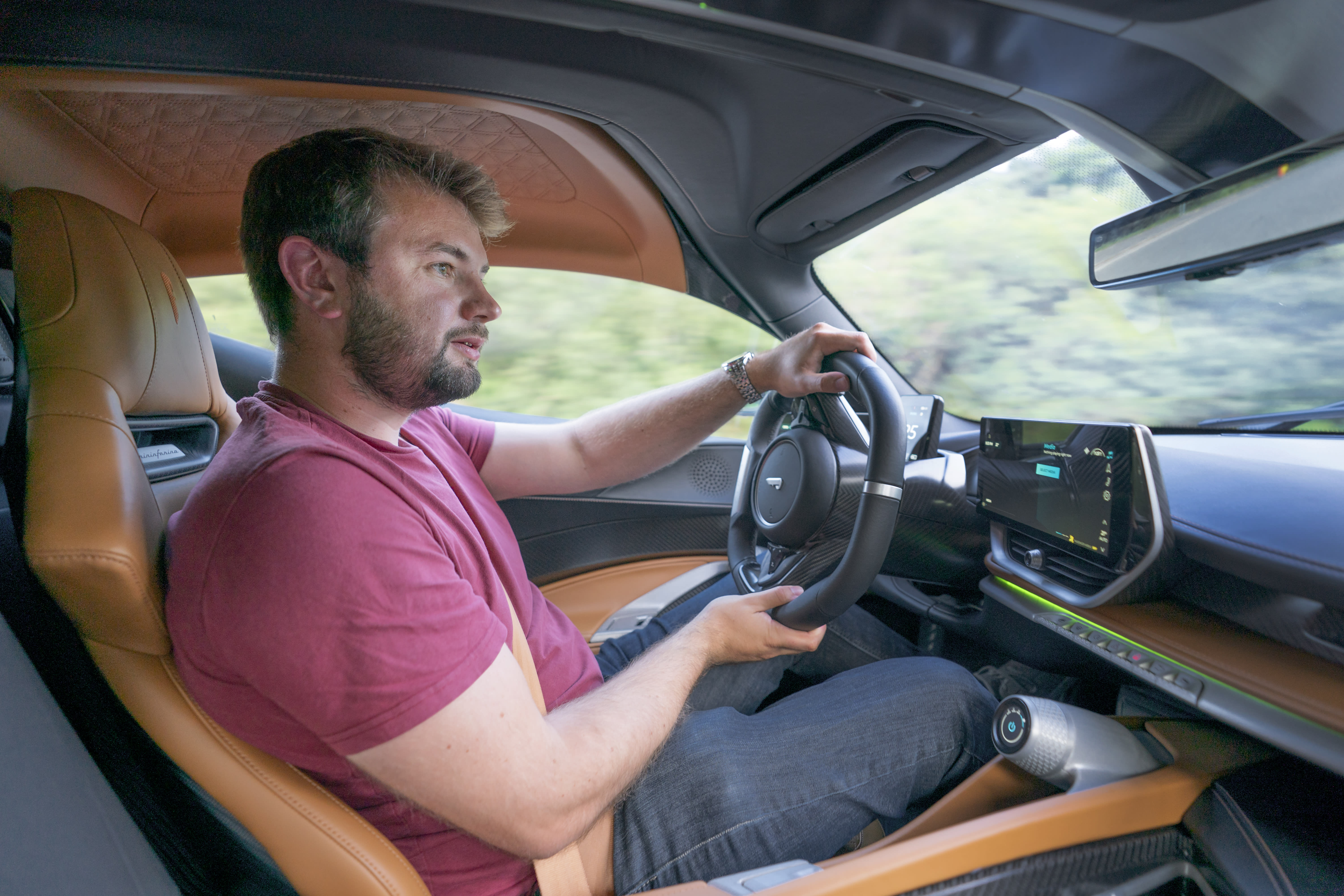
Hyundai Santa Fe review

Introduction
The Hyundai Santa Fe was always a bit of a workhorse. Practical, sensibly priced and packed with equipment, it certainly had its appeal, but it didn’t have the luxury or quality we’ve come to expect from big family SUVs. But the new version is here, and it’s an entirely different kettle of fish.
With a choice of hybrid powertrains, the Santa Fe has become more premium and more efficient, while still offering the space that made it such a practical beast in the first place. Now with a more stylish interior, heaps of cutting-edge technology and a more futuristic (if slightly more divisive) new look, can the Santa Fe finally claim to be a car you choose with your head, as well as your heart?
Select's rating score* - 4.1 / 5
At a Glance
It’s immediately obvious that the Santa Fe has undergone something of a revolution. Now more striking to look at, there’s a futuristic style to the bodywork and a classy, premium image inside. Build quality might not quite be up there with the German class leaders, but this is a sure sign of the direction Hyundai would like to take.
But while the South Korean company has clearly turned on the style, the Santa Fe is still as practical as ever. It should be, of course, because the exterior dimensions are massive, but Hyundai has certainly managed to fill that space with, um, space.
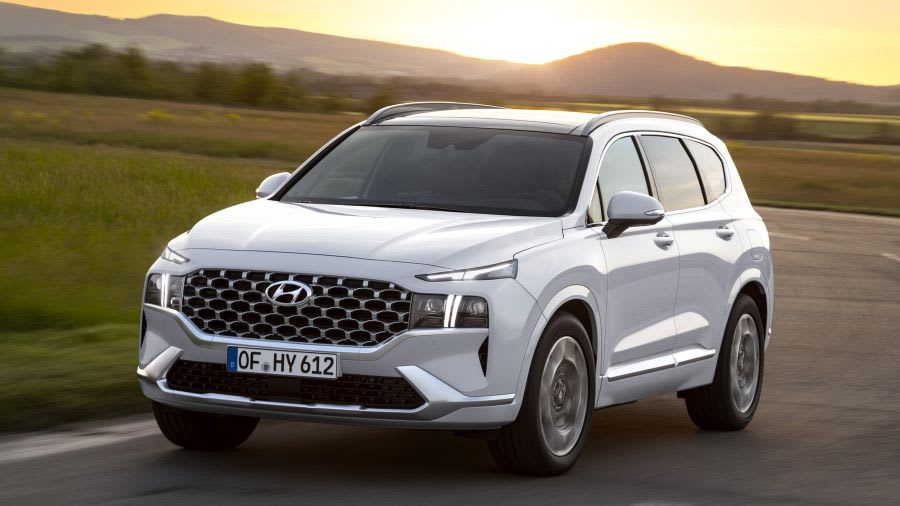
There’s a big boot and seating for seven, and while tall passengers might not want to spend very long in the back seats, they can at least sit there for a short trip.
Power comes from a selection of hybrid powertrains, offering improved economy around town, but Hyundai is also working on a diesel version to satisfy those who use big SUVs such as this for towing. Diesel should suit the Santa Fe well on the longer journeys to which it is so well suited, thanks to its ultra-soft suspension and big, armchair-esque seats.
Key Features
Customers come to the Santa Fe for the space and style, but the real attraction of the Santa Fe is the technology and quality inside. The cabin might not always feature the most premium materials, but it’s really well bolted together, with switchgear that feels robust and solid. There’s no doubt it’s tough enough to withstand the twin test of time and family life.
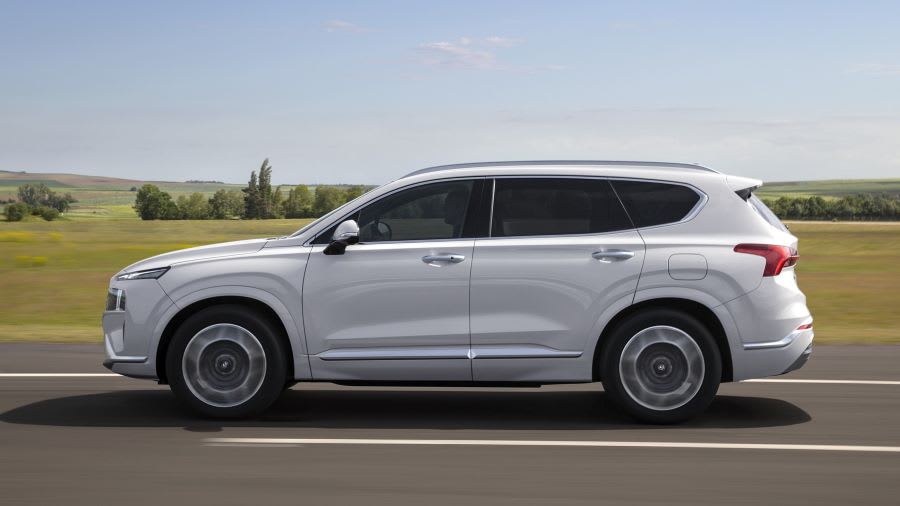
Another pleasant surprise is the on-board technology, including the slick touchscreen infotainment system and the clear, easy-to-read digital instrument display. That system also comes with a blind-spot monitoring system with cameras, turning the virtual instrument dials into a little camera display that looks back down the car’s flank to show you what’s in the hard-to-see areas along the sides of the car. It’s quite a simple solution, but it’s really effective.
Performance & Drive
Somewhat confusingly, Santa Fe customers are faced with a choice of two different hybrids, both of which feature the word ‘hybrid’ in the name. First up there’s the 1.6-litre Hybrid model, which has an electric motor to power the car at low speed or when the engine doesn’t need to work very hard.
Or there’s the Plug-In Hybrid, which has a rechargeable lithium-ion battery capable of driving the car up to 36 miles on electric power before the 1.6-litre petrol engine is required.
The standard Hybrid offers 230hp and comes with an automatic gearbox as standard, while customers get the choice of front- or four-wheel drive. For Plug-In Hybrid customers, there’s less choice – it’s all-wheel-drive or nothing – but there’s a bit more power, squeezing a total of 265hp from the system.
And in case that wasn’t enough, there will soon be a third way, thanks to the arrival of a 2.2-litre diesel model designed for people who tow or take their car off-road. That engine produces 202hp and comes with an automatic gearbox and all-wheel drive as standard.
Given our experience with the Santa Fe’s close relation, the Kia Sorento, we suspect the 2.2-litre diesel will prove to be the engine of choice, but for now it’s hybrid or nothing, and that’s no bad thing. The 265hp Plug-In Hybrid is particularly spritely, getting from 0-62mph in an impressive 8.8 seconds. It isn’t insanely quick, but for a car this big it’s more than potent enough, and it’s only a little faster than the standard Hybrid.
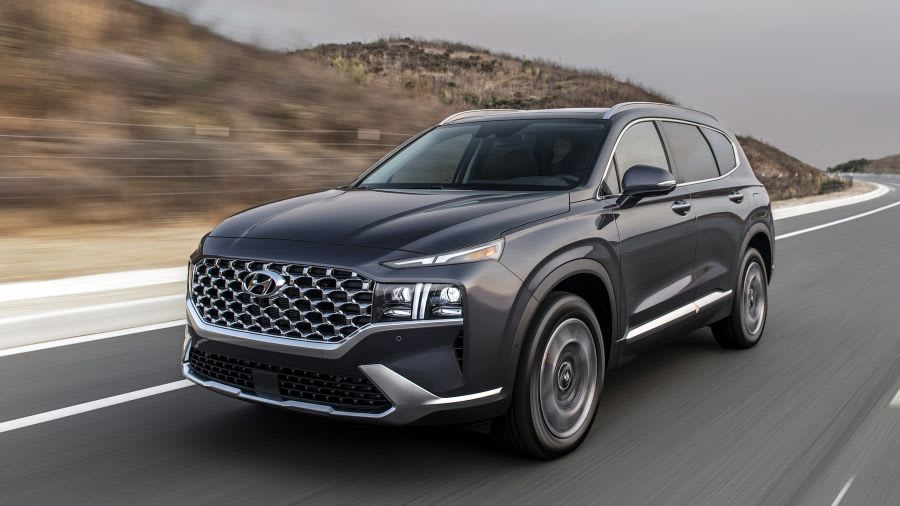
Both powertrains are hugely refined, with very little engine noise permeating into the cabin and only a dash of road noise. Wind noise is more of an issue, thanks in part to the Santa Fe’s sheer bulk, but it isn’t outrageous. Admittedly, the refinement may be down to the astonishing regularity with which the Santa Fe uses near-silent electric power to scoot itself about, but even the petrol engine isn’t too noisy.
That said, the engine does make a racket when it’s pushed hard, and the Santa Fe certainly rewards drivers who take it easy. The suspension is very soft, which makes the car enormously comfortable on the motorway, but its body control is lackadaisical at best, and the whole body pitches and wallows about on the springs.
That’s fine around town, where the ride is generally quite good, but less appealing on back roads, where quick cornering will leave passengers looking a little green.
Not that there’s any reason to corner quickly. The Santa Fe was not built for sportiness, and the steering and brakes offer so little feel that fast driving feels futile. The car simply has no desire to be thrown around, and it makes that obvious right from the off.
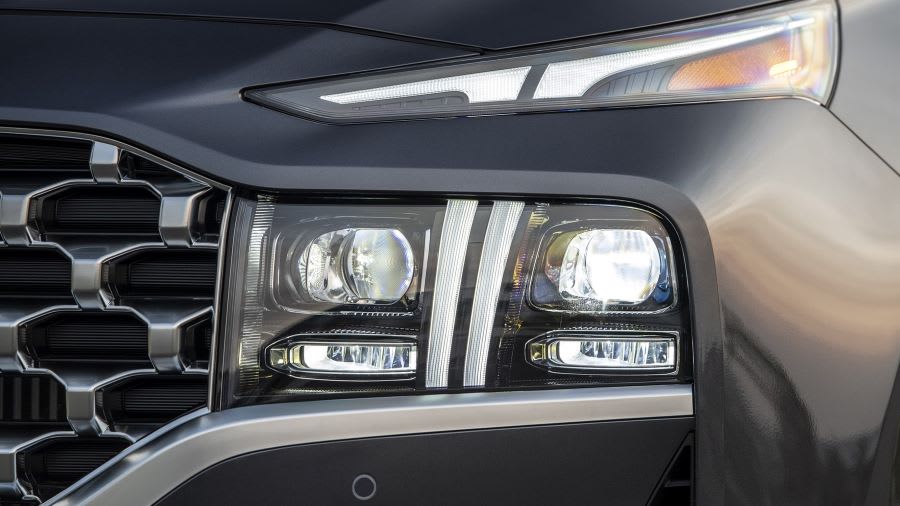
Running Costs & Emissions
As you can imagine, the selection of hybrid powertrains is designed to make the Santa Fe more economical and less polluting around town. The conventional hybrid system helps reduce emissions when parking and when pulling away, while the Plug-In Hybrid allows short journeys to be completed without plundering the fuel tank.
Officially, therefore, the Plug-In Hybrid manages CO2 emissions of just 37g/km, which is good news for company car drivers, while the Hybrid manages 145 or 159g/km, depending on whether you choose front- or four-wheel drive.
The data suggests both will also be pretty economical, with the Hybrid managing 44.1mpg in front-drive form and the Plug-In Hybrid achieving 173.7mpg. That last number sounds amazing, but remember you’ll need a very specific lifestyle to achieve that. Not only will you need to charge the Santa Fe regularly, but you’ll need to limit yourself to mostly very short journeys if you want to get anywhere near.
For those driving more regularly or covering longer distances, the diesel is likely to be the more economical choice.
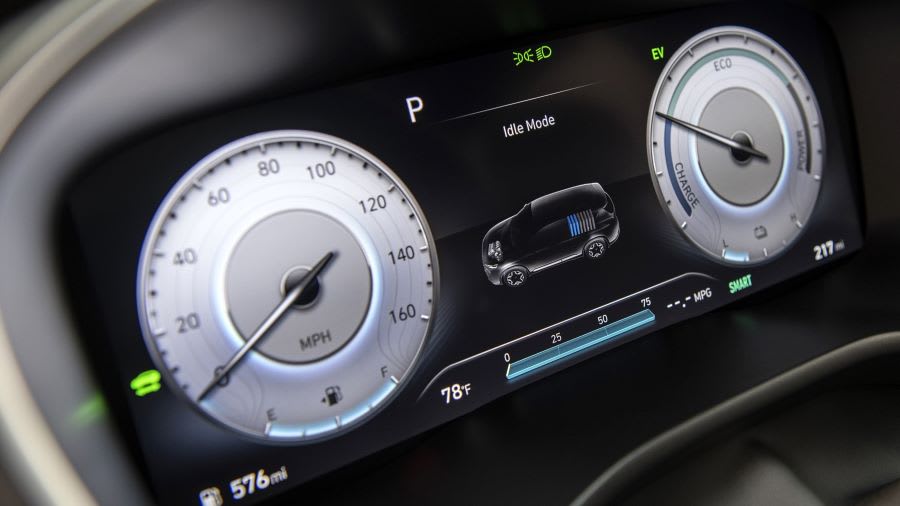
Interior & Technology
The new Santa Fe’s cabin is a massive leap forward compared with that of the old car. Where the previous-generation model felt staid and cheap, the new model looks absolutely stunning, with ultra-modern styling and lots of fresh technology.
The design is quite futuristic, with two enormous screens dominating a button-festooned centre console and steering wheel. Perhaps it could be a cleaner design, but at least it all works beautifully.
Build quality is absolutely first rate, with every piece of trim and switchgear feeling as though it’s properly attached to its neighbours. Material quality isn’t quite as impressive, with some cheaper plastics letting the side down slightly, but it’s still up there with the likes of Ford and Renault.
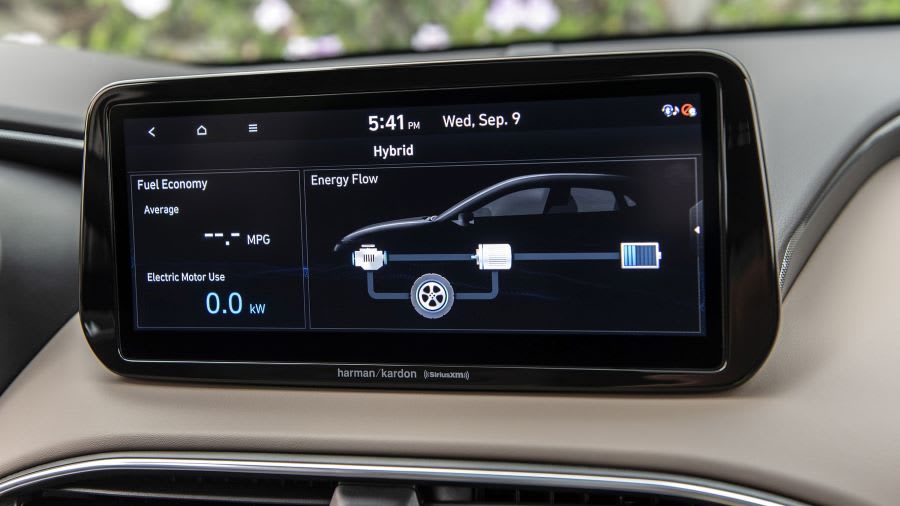
And Hyundai has managed to overtake some of the mainstream car makers when it comes to technology. While the Volkswagen Group has struggled with the reliability of the latest-generation infotainment systems fitted to cars such as the Volkswagen Golf and Seat Leon, the new Hyundai systems are much more convincing. Not only are they more logically laid out, albeit with some confusing displays, but they work crisply and the screens themselves look very modern.
What’s more, there’s plenty of tech to play with, as every version of the Santa Fe comes with a touchscreen navigation system, the Android Auto and Apple CarPlay smartphone integration technology, and a digital instrument display. The more luxurious Ultimate model adds a head-up display to the mix, too, which leaves you needing to divert your eyes from the road less regularly.
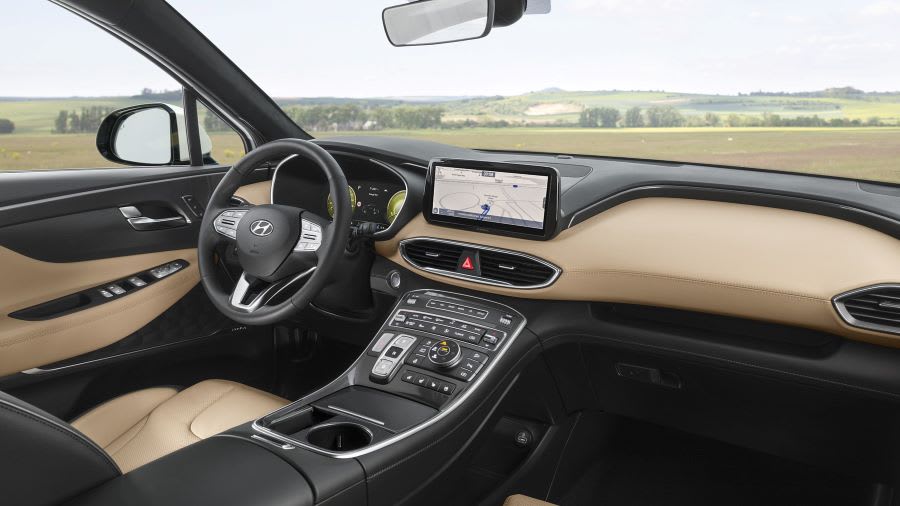
Practicality & Boot Space
In a car this big, it shouldn’t come as a surprise to find bags of room inside. For those in the front, there’s plenty of room between the front seats, making the car feel quite airy, even with dark upholstery. Opting for the Ultimate trim, with its panoramic glass roof, makes it feel even lighter. And that feeling is backed up by the space inside, where rear-seat passengers have plenty of space, and even those in the rearmost seats have a sensible amount. You can fit adults back there, but they wouldn’t want to spend too long sitting in what is, effectively, the boot. Kids are almost certain to love it, though.
Leave those seats tucked away in the floor, however, and there’s an enormous amount of space in the back of the Santa Fe. There’s a total of 571 litres of luggage capacity in five-seat configuration, despite the hybrid system under the skin. Fold the second row down and that rises to 1,649 litres, which is a little disappointing compared with other big SUVs, but it’s hardly cramped. Realistically, there’ll be no problem with trips to the recycling centre or family holidays.
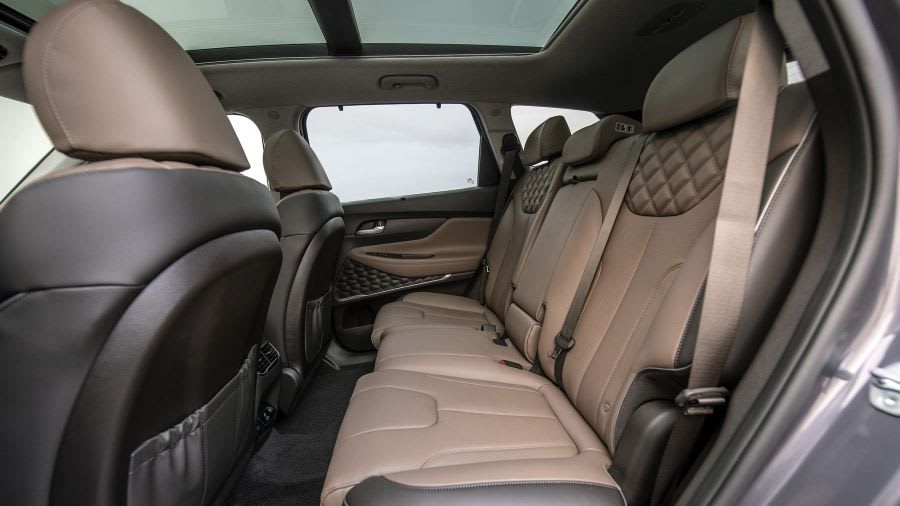
Safety
The new-look Santa Fe hasn’t yet been crash-tested by Euro NCAP, but we fully expect it to pass with flying colours when the time comes. Not only did its predecessor achieve a five-star score, but so too has the smaller Tucson SUV, and the latest i30 family hatchback. Even the little Bayon SUV scored a relatively solid four-star rating.
There’s certainly enough standard safety equipment to justify a decent crash test score. Every version of the Santa Fe comes with collision avoidance technology that can brake automatically if the driver fails to respond to a hazard, for example, and there’s a raft of other features available across the range.
Parking sensors are standard, helping you avoid any low-speed bumps, while the car is available with clever blind-spot cameras that switch on whenever you indicate, showing you what’s lurking on your flanks.
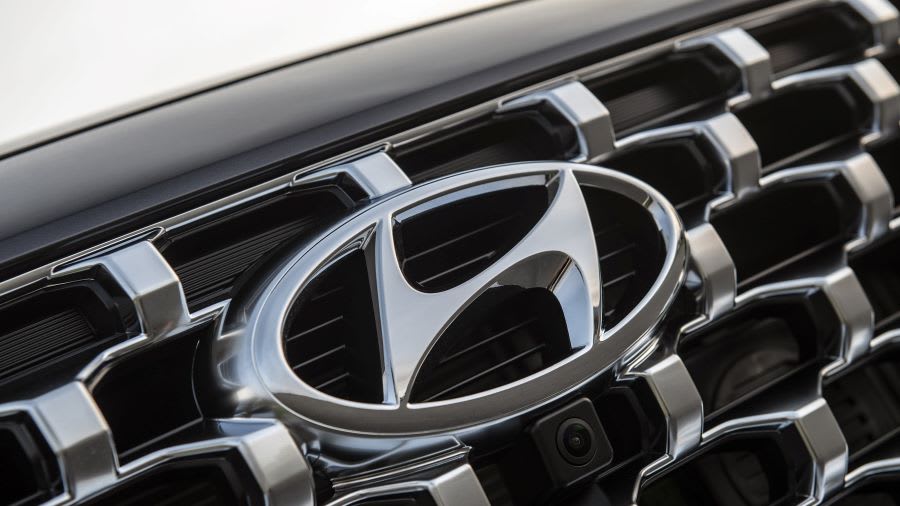
Options
Santa Fe customers face a relatively simple choice of just two trim levels, with the basic Premium model joined by the more luxurious Ultimate version. Both are well equipped, with Premium versions featuring leather seat upholstery, heated front seats and a 10.25-inch touchscreen, as well as a 12.3-inch digital instrument display.
A Krell premium audio system is also included as standard, along with alloy wheels of varying sizes, depending on whether you choose the hybrid, plug-in hybrid or diesel versions.
But while the Santa Fe Premium is well kitted out, the Ultimate provides even more fancy technology. There’s a head-up display as standard, while the front seats are ventilated, as well as heated. A 360-degree parking camera also features, while the cabin benefits from a panoramic glass sunroof to let the light in.
All that sounds great, but you can add some even more luxurious Nappa leather if you so wish, and there’s the usual selection of colours available for the Santa Fe. To tell the truth, the palette isn’t that exciting, with a selection of silvers, greys, blacks and whites to provide classy, understated looks.
There’s no bold red or blue that you get with the Santa Fe’s cousin, the Kia Sorento, but that’s more in keeping with the car’s more grown-up feel.
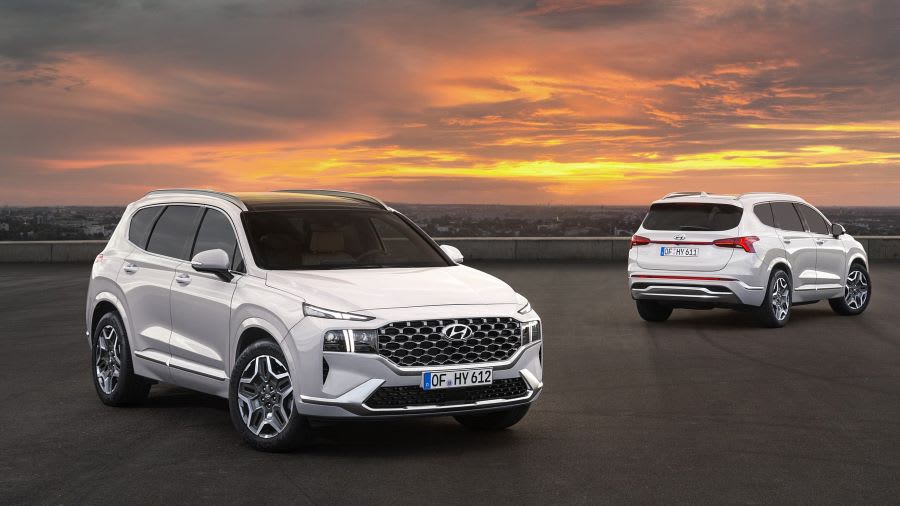
Rival Cars
The Santa Fe is up against some accomplished rivals, but the mainstream large SUV segment seems to be shrinking as attractive leasing deals and badge snobbery draw customers towards more premium models. With larger SUVs such as the Ford Edge and Mitsubishi Outlander departed and the Volkswagen Touareg increasingly becoming a rarity, the market is shrinking.
Nevertheless, the Santa Fe has to compete with slightly more compact models including the hugely impressive Skoda Kodiaq, the sporty-looking Seat Tarraco and the classier VW Tiguan Allspace. There’s also competition from the Toyota Highlander, a new hybrid SUV that sits above the RAV4 in Toyota’s range, and the budget-orientated SsangYong Rexton.
But perhaps the Santa Fe’s biggest rival is its close relative, the Kia Sorento. Another big, comfy SUV with lots of space, fresh technology and hybrid power, the Kia looks chunkier but feels slightly less stylish. It’s a little more of a workhorse, but it’s no less talented for that.
All that said, it’s worth looking at premium alternatives to the Santa Fe, including the Land Rover Discovery and Audi Q7, because lease deals can make such vehicles cheaper than you might think. The same is true of the BMW X5 and the Mercedes-Benz GLE, or you could always consider Hyundai’s more luxurious sister brand, Genesis, which makes the GV80 SUV.
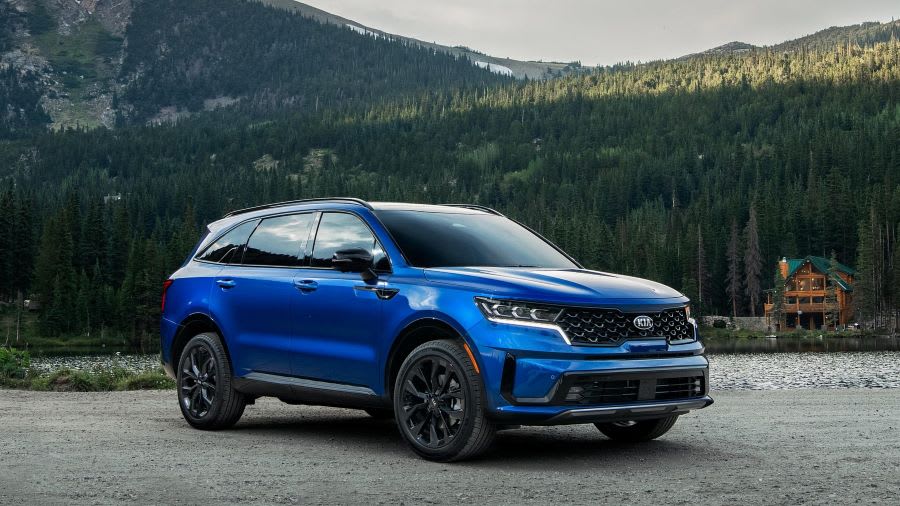
Verdict & Next Steps
The Santa Fe might look and feel modern, but there’s plenty of old-school SUV-ness going on here. For long motorway schleps with a family and their baggage, few mainstream models will be more comfortable or more luxurious. In urban areas and in the countryside, however, the Santa Fe’s sheer bulk and softness starts to count against it. Nevertheless, the technology, quality and space on offer will still make this a really appealing family car.
Where to next?
View latest Hyundai Santa Fe Leasing Deals- from just £328.33per month inc VAT**
Looking for a great leasing deal? Check out our incredible range of Special Offers
New SUV? Read our latest Car Reviews and find the right model for you
Want to know more about leasing? Take a look at our comprehensive Leasing Guides
Interested in everything motoring? Why not catch up on all the latest Car Leasing News.
**Score based on Select’s unique meta score analysis, taking into account the UK’s top five leading independent car website reviews of the Hyundai Santa Fe
**Correct as of 02/03/2022. Based on 9 months initial payment, 5,000 miles over a 48 month lease. Initial payment equivalent to 9 monthly payments or £2,954.97 Ts and Cs apply. Credit is subject to status.
